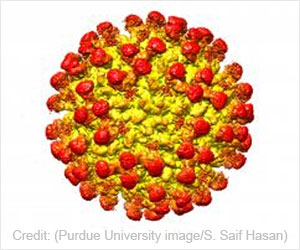“We have identified a novel binding site on the N-terminal domain (NTD), a different area of the virus’s spike that facilitates the binding of HS. This helps to better understand how the virus infects cells. The NTD is also a part of the spike protein that frequently mutates.
“Some antibodies in the blood that neutralize the viruses bind to the same region of the NTD.
“Therefore, targeting the NTD site with molecules like heparin (or heparin mimetics), a known anti-coagulant drug similar to HS, is a possible strategy to stop the virus binding to cells and infecting them.”
Dr Neha Gandhi, from the QUT Centre for Genomics and Personalized Health, said COVID19 vaccines, although achieving success worldwide, were still far from being widely accessible.
“We need alternative antiviral strategies to prevent the spread of COVID-19 and treat infected people,” Dr Gandhi said.
“Epidemiologists believe that persistent low-vaccine coverage in many countries will make it more likely for vaccine-resistant mutations to appear.
“Variants of concern have already emerged in South Africa, the US, India and Brazil. In this regard, alternate antiviral strategies are strongly needed to prevent the spread of COVID-19 and to treat people with COVID-19.
“Most SARS-CoV-2 variants have acquired a positively charged mutation in the spike protein. Molecules like heparin and its mimetics are negatively charged and therefore, these molecules could be used to treat people with severe effects of the virus and any emerging variants.
“Our research indicates that molecules that mimic the 3D structure of heparin with different sulphur chemistry, might be potential broad-spectrum antiviral drugs for COVID-19 and other emerging viral threats via direct interaction with the virus itself.”
The multi-national study, “Evidence of a putative glycosaminoglycan binding site on the glycosylated SARS-CoV-2 spike protein N-terminal domain” published in the Computational and Structural Biotechnology Journal, used both computational and experimental techniques to confirm their finding.
NCI Gadi and QUT Lyra supercomputers are used to model how HS and its inhibitor like heparin would interact with the spike protein.
Molecular simulations run by the QUT research team tested and confirmed the hypothesis that heparan sulphate could form a bridge between the newly identified binding site and another site on the spike important in the virus’s infection.
Source: Medindia



